#Khasia
Text
Ro’meave Castle, O’Khasis = Hohenzollern Castle, Germany
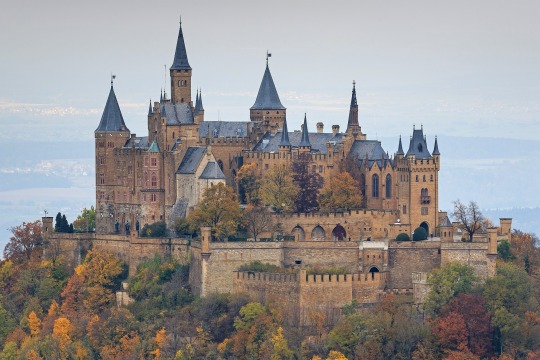


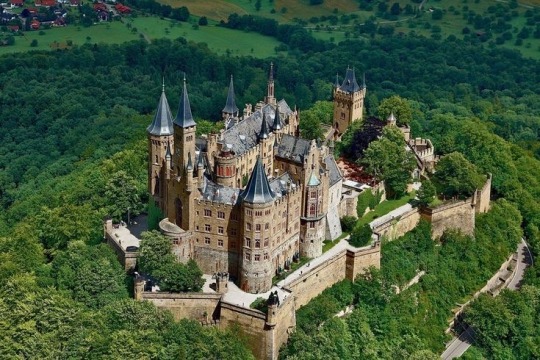
X / X / X / X
(Dw I’m not stealing from that other post. its me)
7 notes
·
View notes
Text
Twi’s Headcanons II: The Region of Ru’aun
After making that last post about the multiverse, it only seemed right that I also do one exploring my own map of Ru’aun, its history, and its politics. It’s also definitely needed in order to understand the other non-canon places in my rewrite, so without further ado:
(Oh shit it’s 3.5k words this time lmao. Also Tumblr ate the quality again so click on the photos)
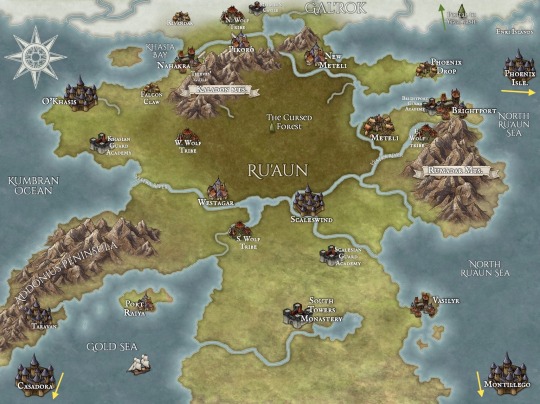
(NOTE: The in-universe calendar used in various places here counts upwards from the birth of Irene. In my version season 1 takes place 482 years after the divine, and season 3 is 500 years later, not 900. AI stands for “After Irene” and BI means “Before Irene”. Comparable to BC & AD)
Khasia & Scalesia:
[Pronounced kah-sia and skay-lee-sia (sia as in ‘Asia’)]
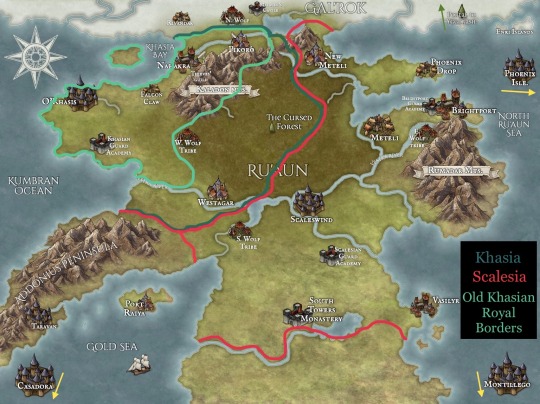
The region of Ru’aun is divided into two different subregions: Khasia in the west/northwest and Scalesia in the east/southeast. During the Great Migration Period (the time in history where humans spread across the globe) they did so in massive tribes consisting of many closely related dialects and cultures. These tribes also gave the regions their modern names, with Ru’aun deriving from the Ru’na people who settled there from Tu’la.
There, the Ru’na divided into two different cultures and ethnic identities; the Kha’shi and the Scal’isi. For many centuries, this division was just as much political as it was cultural. For over one hundred years, beginning in around 126 BI, the Khasian subregion was unified into a singular kingdom, whose capital was the growing town of O'Khasis. Meanwhile, as Scalesia was much larger then Khasia, it was home to many different kingdoms and factions throughout history, but they all had one thing in common: Khasians and Scalesians did not like each other.
It was in the central Scalesian neighboring villages of Windyr and Kalnyr, that Éiryn Shala’shaska and Shádd Um’branis (modernized to Irene and Shad) were born. While the many adventures and stories of the Divine each have varying levels of credibility, one of them is certain; it was them, along with their four compatriots, that brought an end to the Kingdom of Khasia and established a much better form of regional governance, known as the Lordship System.
Over the course of history, the animosity dividing the region slowly faded away with continued cooperation for the good of the entire region. However, the two bastions of each side; the grand cities of O’Khasis and Scálswynd (later Scaleswind; the successor to Windyr) remained sworn enemies along with their ruling houses of Ro’meave and Ronsenburg. This never changed until the 6th century AI, when Aphmau Shala’shaska and her companions convinced both lords to join the region-spanning Phoenix Alliance, which would eventually become the modern nation of the Phoenix Republic, uniting Khasia and Scalesia under a single banner.
In the modern day, this divide does still exist, but only in the accent and inherited traits of its residents, who share their cultures rather than fight to keep the other away from them.
[essentially, Khasia is the equivalent of Britain accent-wise, which is why Garroth has one, and on average Khasian people are more lighter-skinned/caucasian, and Scalesians are more darker-skinned/Hispanic-adjacent, but over the centuries it becomes a more and more mixed populace between them both.]
Individual Locations:
Canonical:
Scaleswind: Considered a holy city as it is the direct successor to Irene the Matron’s home village of Windyr, and also the seat of power in all of Scalesia.
O’Khasis: The largest and oldest city in all of northern Ru’aun, and the seat of power in Khasia. Before and during the Divine Era it was the capital of the Kingdom of Khasia, and was the home city of Esmound the Protector. O’Khasis is also the economic capital of the modern-day Phoenix Republic.
Brightport: the largest port city in Northeastern Ru’aun, and the third overall after O’Khasis and Vasilyr. It is also home to the Brightport Guard Academy; the alma mater of most guards/knights in the Northeast.
Meteli/New Meteli: a small village situated on the base of the (as known in the modern-day) Shalashaska Peninsula. Larger than Phoenix Drop but smaller than Brightport, it was overrun and destroyed by O’Khasian forces during the First Alliance War, but most of its inhabitants survived and relocated north where they built New Meteli.
Pikoro Village: As one of the northernmost towns in Ru’aun, in the border area some call Gal’raun, it held a tenuous relationship with the nearby Northern Werewolf Tribe. Pikoro also held to the Old Khasian beliefs regarding Witchcraft, and the practice was outlawed in the town even though it was rather normalized in both its south and to its north, until the witch Lucinda Hawkins came to power. In the modern day, it is home to the headquarters of the Global Council of Witchcraft.
Phoenix Drop: At first a small village on the tip of the Shalashaska Peninsula, it would rise into a large city; one on par with Scaleswind, during the Lordship of Aphmau Shala’shaska (whom the peninsula was later named after). This would be in part due to the fact that it was believed she was the second coming or reincarnation of Irene the Matron. The city would also become the future capital of the Phoenix Republic far later in history, and in the modern day, it along with Scaleswind and O’Khasis are considered the three titans of middle-age Ru’aunian civilization, and the three surviving treasure troves of Phoenixian history.
Enki Islands: An island chain off the coast of Gal’rok originally named Vanirfjörd, specifically an area known in the modern day as Forskerland. That area, along with the islands themselves, are named after their most famous native: Enki the Keeper. In legend, they are also inhabited by the immortal dark-magic being known as the Demon Warlock; Enki’s greatest foe.
Phoenix Island: A large temperate island in the North Ru’aun Sea, and said to be the site of a grand city built by the Divine Warriors to be their home. Historians are conflicted over the actual existence of this island, as nothing like it is visible via satellite imagery or any other kind of searching, however it is well-documented that a similar island, home to the ruins of an old city, was also the original capital of the Phoenix Alliance. In truth, the island is kept hidden under a powerful magical illusory shield created by Enki and Esmound together, that cloaks the island and protects it from anyone who does not wield a Divine Relic. They did this because the island, along with being home to two different dimensional anchor locations, was the site where Shad was banished; and the entire island still has that magical residue practically oozing off of it to this day. They couldn’t let anyone find a way to harness it, so the island could only be reachable when it was sought out or inhabited by at least one of their worthy successors, and it thus could still harbor society while also remaining protected. After everyone else died and Aphmau left, the residents of the island were driven away by a magically-induced flood meant to make them all leave, and those people made Phoenix Drop the capital after they believed the island had sunken beneath the sea. Scientists believed this is what happened as well, but they’ve never been able to find evidence under the ocean to support it either
The Werewolf Tribes: Whereas Humans are native to Tu’la, Werewolves are the original inhabitants of Ru’aun. Those that existed during the Rising Phoenix Era (the time of MCD) were akin to giant wolves who walked on two feet and were fully intelligent. Over the centuries, they greatly evolved -mainly via cross-breeding with humans- into the Modern Werewolf; a person with a mostly human body, but also the ears, tail, teeth, senses, and instincts of a wolf, and usually along with an allergy to chocolate. The Cardinal Tribes, as they’re collectively called, were the four major Werewolf civilizations during the Rising Phoenix Era, and each held complex -though often hostile- relationships with one another. A defining factor of Werewolf culture during this time was the universal worship of the Goddess/Personification of the Moon; Lunaris; similar to the early Meif’wa worship of the God Sollus, AKA the Sun Father. Both of these gave the Sun and Moon their modern names, but are also now mostly dead religions, with incredibly few honest practitioners left. However Moon/Sun imagery is still common in Werewolf/Meif’wa households, as cultural decorations.
the Original Places:
Westagar: a large town in the southern part of Khasia. It was decimated by one of the many wars that Lord Garte and High Priest Zane of O’Khasis started in an attempt to rebuild the Khasian Kingdom, however over many years it was able to revitalize itself into a functional city once again, with the help of the Phoenix Alliance and the new O’Khasian leadership.
Vasilyr: A large port city in southern Scalesia, even beating O’Khasis’s own port for the title of largest in Ru’aun. Vasilyr has a long history of political neutrality, and has thus become a major player in terms of economics, as well as holding the third-party position in many diplomatic affairs. In the modern day, it is the capital of the small country of Vasilon.
Rivandar: a small town in Gal’raun, and a common rest stop for travelers.
Taravan: the grand former capital of the Torvan Empire, during the Rising Phoenix Era an independent city rich in both money and history. In the modern era, it is the capital of the nation of Torrva; the modern descendant-state of the Empire.
Port Raiya: a fishing village on the island of Raiya in the gold sea, first established by the Torvans and the birthplace of Kulzak the Wanderer.
Casadora: The Capital of the country that has mostly been known throughout history by the name of Corsa, though it was also known as the Tu’lian Empire during the Rising Phoenix Era. Also the crown-jewel of northern Tu’la, it has long been the seat power in the area north of the Shambaraaka Mountains, and was built up by the Torvans during their reign over the area.
Montillego (mon-tee-ay-go): The close second to Casadora, Montillego is a treasure trove of historical sights, such as the famed Montillego Colosseum, constructed by the Torvans as well. The city is also thought to be significant to Menphia the Fury, along with the Colosseum itself, making it similar to Scaleswind in that it is a holy city, and it is where many of the defining moments in the Fury’s life took place.
Portal to Yggdrasil: The Yggdrasil Forest, as it is most commonly known, is a thought-to-be Gal’rokian mythological plane of existence, home to the naturally magical and immortal race of Elves, however this legend is true. Hidden away in one of the many narrow passages of the Arctic Mountains in Gal’rok that surround the North Pole, there is a heavily magically-protected portal, accessible only via boat. If an elf or a person of elf ancestry reaches the barrier, it will open and allow the travelers through the Dimensional Veil and into the realm of Yggdrasil, but only if the person reaching out to it is of Yggdrasilian blood.
History (& The Phoenix Republic):
The Human Species first evolved into existence in the central Tu’la region, while wolves in Ru’aun evolved into an intelligent humanoid race known as Werewolves, and the same happened with a now-extinct species of feline in Jin’tal, becoming the Meif’wa race. As said in the section of Khasia and Scalesia, humans migrated north into Ru’aun roughly around 30,000 BI. Many of them continued into the rest of the world, such as the Gar’lokk, who made their home in the frigid arctic region they would give the name Gal’rok, while even more would use it as a land bridge to the regions now known as Dan’vei and Jin’tal. In Ru’aun however, the Ru’na would split into the Kha’shi and Scal’isi, each forming their own societies in the region.
This is also when humans began coexisting with the First Werewolves in Ru’aun and the First Meif’wa in Jin’tal, thus beginning the evolutionary history that shaped the modern day variant of those two species.
A focal point of early Ru’aunian and Tu’lian history was the Torvan Empire; while not the largest empire in all of history, it is still considered one of the greatest, and it shaped much of Northern Tu’la and Southern Ru’aun into what they are. Spanning that area, along with the entirety of the Gold Sea, the Torvan Empire ruled from 607 BI to 10 AI, and it’s mark left on the Ru’la border region is still seen in the modern day, with its grand cities of Montillego, Provencia, and its capital of Taravan still standing tall, and the Addonius Peninsula -which makes up the modern nation of Torrva- still bears the name of one of its greatest Emperors.
Ru’aun went through quite a lot of changes from 20 AI to 100 AI, for this period was the lives of the Divine Warriors. While it is undeniable that this group of six individuals did exist to some degree, it is greatly debated whether they were truly gods. Yet still, the Church of the Divine remains the dominant religion in nearly the entire Eastern Hemisphere (excluding Southern Tu’la) to this day, and some of their most notable endeavors include the dissolving of the Kingdom of Khasia, supposedly in the aftermath of the legendary Wyvern War, and brought forth the Lordship System to Ru’aun, where every city and village would government itself and be protected by a Guard Force relative to the town’s size. Esmound the Protector’s own sister, Princess Elandra Ro’meave, was made the first Lord of O’Khasis, and Irene also warned against the building of kingdoms via war and conquest, for a nation built upon bloodshed was comparable to a castle built upon sand; neither would ever last the test of time.
For over four hundred and fifty years after the Divine Era, the world of Ru’aun was, for the most part and excluding the general advancement of society, rather un-notable in terms of history-making events. However, beginning in the late 460s AI, this would take a drastic turn.
The reign of Lord Garte II of O’Khasis brought on a time of war in Khasia and of uncertainty in Ru’aun. Strangely, the High Priest of Irene took quite an active role in the conquest and attempted rebuilding of the very kingdom Irene and Esmound demolished, however it is more conceivable when you consider the Priest at the time was the Lord’s own son, Zane Ro’meave.
But in 482 AI, the small and inconsequential village of Phoenix Drop would gain a new Lord, one Aphmau Shala’shaska.
Shala’shaska is slightly strange, in that there was no record of her existence prior to this year, but it is likely any documentation was simply lost to history. Nevertheless, her reign single-handedly rose Phoenix Drop up from its deathbed and into the regional spotlight, growing its populace and Guard greatly. Records are mixed of how this came to pass, but even two of the four* Ro'meave children came to serve under Shala’shaska as her knights, and later a third, who previously had been mistaken for dead.
Another strange thing about this lord and her village, was that in 483 AI during the First Alliance War, she, with a large posse, as well as High Priest Ro’meave, who was accompanied by Lillian the Dark Mask of the Jury of Nine, seemingly vanished into thin air.
They returned to history a full fifteen years later in 498 AI, and by that time, Levin Shala’shaska, Aphmau’s eldest son, was Phoenix Drop’s lord. Shala’shaska and her compatriots then set out into the North Ru’aun Sea and supposedly discovered a beautiful forested island, where they began building the capital of the Phoenix Alliance. I say supposedly, because from all rights and accounts, the island shouldn’t exist. But it very clearly does, and could not have been confused with one of the many in Scandovia.
This is also the same year that King Ramón III of the Tu’lian Empire launched an invasion on the city of O’Khasis in long-awaited retribution for the believed assassination of his wife, Queen-Consort Isabela. After the successful invasion, the king grew power-hungry and continued into the region, prompting war with the Phoenix Alliance. Over the next three years, the Alliance grew exponentially, and by its victorious end of the War For Ru’aun, it encompassed nearly the entire region.
Various religious figures have believed that the multitude of strange-to-downright-impossible claims of things that happened during this period of time are proof that Chancellor Shala’shaska and her comrades were the mythicized Second Coming of the Divine; part of a prophecy where Shad the Destroyer would rise again and the Divine Warriors would be reincarnated to stop him.
While the timeline in the story does match, the theory is heavily criticized on all accounts, notably by the international community from the perspective of Phoenixians believing the forerunner of their country was founded by gods. But that is just one of many ways the belief is debated, even amongst the Church of the Divine itself.
For many generations, Ru’aun flourished and progressed under the peace and cooperation brought on by the Phoenix Alliance. This unity was the cause of never-before-thought-possible levels of interconnection in politics, trade, and culture. The Alliance also brought on a sense of unified camaraderie across Ru’aun over the centuries, and over that time, it evolved from a simple trade/defense alliance into a loose confederation, and in 1498 AI; one thousand years since its founding, the Phoenix Alliance was united into a singular nation; the Phoenix Republic.
The Republic, sometimes also referred to as Phoenixia (fin-icks-ee-uh) spanned an impressive amount of land; nearly all of Ru’aun. It is also considered one of the oldest still-standing countries in the modern world, and the longest-standing Democratic one, as it has operated since creation with an elected Assembly and elected Chancellor as government and head-of-state. It is also very diverse, containing all of Khasia, nearly all of Scalesia, and the native Werewolf lands.
A large part of that land is also made up of the Dark Forest (formerly “Cursed Forest”). When it was first officially claimed as Alliance protected-land during the War For Ru’aun, Chancellor Shala’shaska merely stated that: “The area known as the Cursed Forest shall forever be under the full protection of the Phoenix Alliance. It is not to be invaded, chopped down, or otherwise disturbed, and will only be entered under the most dire of circumstances. Immediate authority over the forest’s land and matters concerning it shall henceforth fall to Lady Lucinda Hawkins.”
Hawkins, the founder of the Global Council of Witchcraft, held that position until her death, but failed to specify a replacement before then. Under the Republic government, the forest is considered a National Park under the protection of the relevant Ministry, but many things are unknown about the forest, due to its history of people entering but never coming out, and Council of Witchcraft’s own investigation confirmed that the forest has incredibly old and incredibly powerful enchantments and curses on it, prompting the Ministry to declare it dangerous to enter without the proper precautions. This has spurred many theories, both in genuine and joking manners amongst Phoenixian citizens of what could have put those spells on the forest, and whether it was inhabited by cryptids or supernatural entities.
Over the years, the Phoenix Republic held a large place on the growing World Stage. The city of Nahakra was one of the centerpieces of the Industrial Revolution, and since the early 20th century, the Republic has firmly established itself as the most powerful nation in the world, closely followed by the Kingdom of Brusava.
In the modern day, specifically the 2020s AI, the Phoenix Republic continues to be a global superpower, with a territory spanning most of the Ru’aunian region, and several metropolitan centers such as its capital of Phoenix Drop, along with Scaleswind, O’Khasis, Brightport, South Towers, and Pikoro City. It is well known for its diverse populace of all types of humans, Werewolves, and Meif’wa, with an overall population of over two-hundred-million people. Its dominant religion is the Unified Church of the Divine, and it continues the mission set forth by Chancellor Shala’shaska of remaining a beacon of light for those oppressed or threatened, and is one of the largest asylum-granters of refugees and immigrants around the world.
But when a large group of friends all end up living as neighbors on the same street in the suburbs of Phoenix Drop, no one could have possibly imagined what would become of their lives, who they were descended from, or what had been truly threatening all life on Earth ever since the Second Coming of the Divine, all those years ago.
[this is basically where the beginning of my still-very-rough idea of how a Mystreet rewrite would go, with the Demon Warlock and The Void being the primary antagonist/threat.]
[*three of the four Ro’meave children including my OC, who is the older half-sister of the brothers within my rewrite.]
Modern National Borders:


Equivalence to IRL countries:
Phoenix Republic - Combo. of UK, Ireland, USA, & Canada
Torrva - Combo. of Italy & Greece
Torvan Empire - Combo. of Roman Empire & Ancient Greece
Vasilon - Combo. of Switzerland & Monaco
Baronnia - France
Scandovia - Combo. of Sweden, Iceland & Norway
Norstenland - Combo. of Germany & Denmark
Rakosia - Combo. of Scotland & The Netherlands
Brusava - Russia
55 notes
·
View notes
Text
Sylhet Wonders: Unveiling the Top 10 Tourist Hotspots
Sylhet, nestled in the picturesque northeastern region of Bangladesh, is a treasure trove of natural beauty, rich cultural heritage, and historical significance. This enchanting city boasts a myriad of tourist destinations that cater to every traveler’s taste. Join us on a virtual journey as we explore the top 10 tourist place in sylhet, each offering a unique blend of charm and history.

Ratargul Swamp Forest
Our journey begins with the mesmerizing Ratargul Swamp Forest, the only swamp forest in Bangladesh. Immerse yourself in the tranquility of nature as you navigate through its crystal-clear waterways surrounded by lush greenery.
Jaflong Valley
Next on our list is the breathtaking Jaflong Valley, renowned for its tea gardens, hills, and the Dawki River. The sight of the crystal-clear river flowing through the foothills of the Himalayas is a captivating experience.
Lalakhal
For a serene boat ride and stunning views, Lalakhal is the perfect destination. The emerald-green water of this river, flanked by lush green landscapes, creates a serene atmosphere that is nothing short of magical.
Hazrat Shah Jalal University of Science and Technology (HSJUST)
A visit to Sylhet wouldn’t be complete without exploring the Hazrat Shah Jalal University campus. Known for its architectural beauty, the university offers a tranquil environment surrounded by hills and tea gardens.
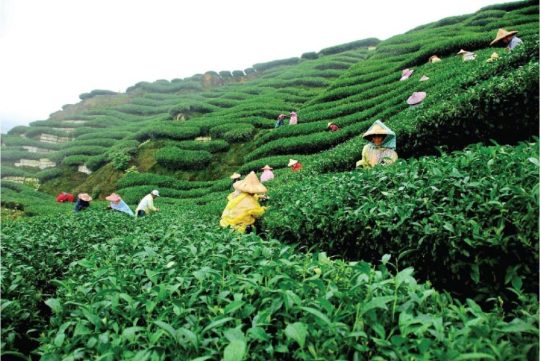
Shrine of Hazrat Shah Jalal (RA):
Delve into the spiritual heritage of Sylhet by visiting the Shrine of Hazrat Shah Jalal, a revered saint. The mosque and the serene surroundings provide a peaceful retreat for both locals and tourists.
Bisnakandi
Nature enthusiasts will find solace in Bisnakandi, where the meeting point of three rivers creates a unique landscape. The surrounding hills and the clear water make it a captivating spot for photographers and nature lovers alike.
Srimangal
Known as the “Tea Capital of Bangladesh,” Srimangal offers a delightful experience for tea connoisseurs. Explore lush tea gardens, witness the tea-making process, and savor the aroma of freshly brewed tea.
Lawachara National Park
Wildlife lovers, rejoice! Lawachara National Park is home to diverse flora and fauna, including endangered species like hoolock gibbons. Trek through the forest trails and experience the thrill of encountering wildlife in their natural habitat.
Shahi Eidgah
Step back in time with a visit to Shahi Eidgah, a historical site with architectural significance. This centuries-old structure reflects the cultural heritage of Sylhet and provides a glimpse into the city’s rich history.
Khasia Rajbari
Our journey concludes at Khasia Rajbari, a historic palace nestled amidst the hills. Explore the remnants of the Khasia Kingdom and marvel at the architectural beauty that stands as a testament to the region’s royal past.
Sylhet, with its diverse range of attractions, promises a memorable experience for every traveler. Whether you seek the tranquility of nature, the spirituality of historical sites, or the thrill of wildlife encounters, top 10 tourist place in sylhet destinations offer a kaleidoscope of experiences that will leave you enchanted and eager for more. Plan your trip to Sylhet and immerse yourself in the beauty 8and culture of this hidden gem in Bangladesh.
0 notes
Text
Tanguar Haor Beautiful Places To Visit In Bangladesh
Tanguar Haor Beautiful Places To Visit In Bangladesh
Tanguar Haor (Tanguar Haor) is one of the largest groups of water mahals in Bangladesh. On the northeastern edge of Bangladesh Reputation Dharmapasha of the district and Taihirpur are rich in live life maps, The first is Sundarbans. Khasia of Meghalaya, India, At the foot of Jainta hill, rows of hijal-karach are decorated, The birds are the tangar haor fish, A huge sanctuary for birds and other…
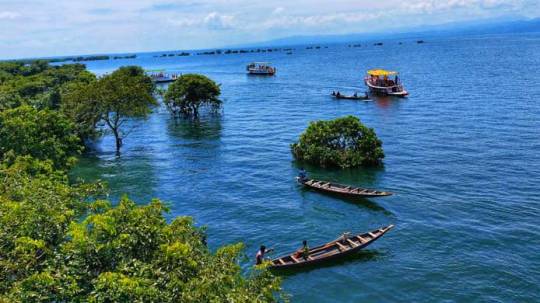
View On WordPress
0 notes
Text
TURISIAN.com – Bosan atau penat dengan hiruk pikuk perkotaan? Mungkin sudah saatnya Sobat Turisian mencari tempat wisata alam terbuka yang cocok buat healing dan menenangkan pikiran. Nah di Kabupaten Karo, Sumatera Utara (Sumut) ada tempatnya yang pas buat hal itu, yaitu Taman Hutan Raya (Tahura) Bukit Barisan.
Lokasi taman hutan raya ini terletak di Kabupaten Karo. Tepatnya di sebelah utara Kota Berastagi. Jadi kalau Sobat Turisian melakukan perjalanan dari arah Kota Medan, Tahura Bukit Barisan berada sebelum memasuki Kota Berastagi.
Sama seperti tahura di daerah lain, destinasi wisata ini juga merupakan sebuah kawasan hutan lindung dan konservasi alam. Sekaligus menjadi destinasi wisata alam yang menarik.
Baca juga: Tiga Aktivitas Wisata Menarik Saat Berkunjung ke Berastagi
Dengan area seluas 51.600 Ha, Tahura ini memiliki fungsi dan peranan untuk menjaga ekosistem alam di sekitarnya. Serta sebagai upaya konservasi sumber daya alam.
Aneka Flora & Fauna di Tahura Bukit Barisan
Sebagian besar kawasan Tahura ini merupakan hutan lindung. Berupa hutan alam pegunungan yang mayoritas tumbuh jenis-jenis pohon pegunungan. Seperti Pinus merkusii, Altingia exelsa, Schimawa/lichii, Podocarpus sp, Toonasurei, dan jenis-jenis lainnya.
Sobat Turisian pun saat berkunjung ke sini, akan menemui pohon durian, dadap, rambutan, pulai, aren, rotan. Lalu ada jenis pohon Pinus caribeae, Pinus khasia, Pinus insularis, Eucalyptus sp, Agathis sp, dan lain-lain.
Bukan hanya itu, di Tahura Bukit Barisan, Sobat Turisian juga bisa berjumpa dengan berbagai jenis fauna. Di antaranya monyet ekor panjang, beruk harimau, siamang, babi hutan, ular, rusa, trenggiling, berbagai jenis burung, serta jenis-jenis satwa lainnya.
Baca juga: Tiga Aktivitas Wisata Olahraga di Sumatra Utara yang Seru Buat Dicoba
Sementara di bagian lain dari kawasan Tahura ini, terdapat wilayah Desa Tongkoh yang menjadi areal kunjungan umum. Di situ terdapat berbagai fasilitas pelayanan kunjungan wisatawan. Ada area parkir, visitor center, pondok wisata, open stage, dan jalan setapak dengan beberapa shelter di beberapa spot.*
0 notes
Text
Marriage In India

The three major tribes in Meghalaya are Khasia, Garo and Jaintia.
They were the first to have their own kingdoms before the British arrived.
One of the first tribes to arrive in Meghalaya was the Khasi tribe.
It came from Myanmar and was settled in East of Assam.
Khasi is the largest population of the Meghalaya Wedding.
Let's look at some amazing facts about the Khasi tribe in Meghalaya
A rice and tea bowl in the early morning:
Can you picture rice and tea? It's the Khasi tribe's most favorite breakfast.
Tea in red with a touch of sugar and rice in a bowl. Two pieces of meat or chicken for a complete dinner.
A stone, not loofas in the bathroom :
Loofas are a favorite and are widely used in bathrooms for bathing.
The people of Meghalaya do not make use of loofas, but they have special soaps for bathing, which are available only along the banks of Umngot River Dawki.
They like to scrub their bodies with stones before taking a bath.
Friendships With Kwai:
Kwai is a sign of friendship or a new connection. Kwai is a mixture of Arcai nuts and betel leaf.
It is regarded as a pure and divine form.
HTML0 English as their common language:
English is their second first language.
It is most commonly used to communicate and connect with all groups of society.
This is in contrast to Hindi which is more used in other parts of the nation.
The Duitara:
Khasis are known for their traditional musical instrument, the two-stringed Duitara.
Music is an integral component of their lives.
To express emotion and joy, singing and dancing are enjoyed by all.
Meghalayan Wedding :
Each state has its own distinct culture and the wedding rituals that it follows.
The Meghalayan khasi tribe has its own unique wedding system. Let's look at the intriguing rituals of khasis.
Women:

The Khasi women are beautiful, with their pink and red cheeks.
Jainkyrshah is a way they show respect for males and elders.
Live in relation:
Khasis don't believe in weddings, as it's an uncommon event.
If you ever attend or have heard of the possibility of a Khasi wedding, it must be a big fat wedding that is usually followed by engagement.
This is only done with the consent of both families. The couple can live happily together in a live-in relationship and not have to tie the sacred knot.
The tribe of the tribe of the live-in relationship accepted it well before the law of Indians was made.
Women Rule:
Women have an advantage over males. Because there are no marriages and when childbirth happens, men leave and move to other places.
The female alone takes care of her child.
Khasis believe that the first baby born to a female is a gift from God, so they do birth children, however the children have no father identity.
Law of Inheritance:
Meghalaya is the sole place in India, where preference is given to the daughters and not son to be the inheritor of ancestral properties.
The whole property is transferred to the youngest sister, and she takes care of all siblings and ancestral assets.
The mother can give the property to her younger sibling or adopt another woman , similar to her daughter in law. A Pick the a Wedding
1 note
·
View note
Text
Meghalayan Wedding Rules
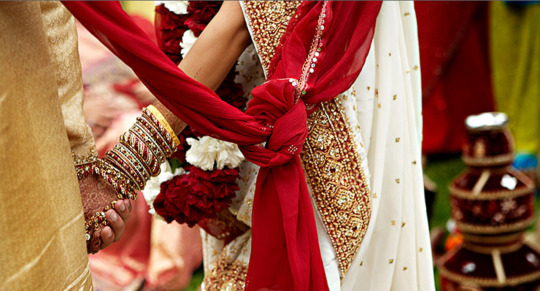
Meghalaya is a region of Northeast India. There are many tribes living in harmony with nature.
The three most important tribes of Meghalaya include Khasia, Garo and Jaintia. They were the first to establish their own kingdoms prior to the British arrived. One of the tribes that arrived in Meghalaya was the Khasi tribe.
They came from Myanmar and was settled in East of Assam. Khasi is the predominant people of the Meghalaya Wedding.
Let's find out some fascinating details about the Khasi tribe of Meghalaya
A cup of tea and rice in a bowl in the early morning hours:
Do you have a picture of rice and tea? Yes, this is the most popular breakfast for the Khasi tribe.
A cup of red tea is served with sugar and a bowlful of rice. Two pieces of meat or chicken for a complete meal.
HTML0 A stone, not loofas in the bathroom:
Loofas are very popular and are widely used in bathrooms for bathing.
Loofas aren't utilized by the Meghalayans. However, they do use special soaps for bathing that can only be found on the Umngot River Dawki.
They prefer to scrub their bodies using the use of a stone prior to taking the bath.
Making friends with Kwai:
Offering Kwai is significant at the beginning of the new friendship or relationship. Kwai is a mix of betel leaf and Arcai nuts.
It is pure and divine form.
English is their language that is communicable.
English is the second-language of their people and most frequently used to connect and communicate easily with all different social groups.
Hindi, which is more prevalent in other regions of India, is not widely spoken in India.
The Duitara
Khasis are known for their traditional musical instrument, the two-stringed Duitara.
Music is an integral element of their daily routine. Dance and singing are enjoyed and enjoyed by all who want to express emotions and joy.
Meghalayan Wedding :

Every state has its own distinct culture, and each state has its rituals for a wedding.
Meghalaya and its khasi tribe are blessed with a unique system.
Let us guide you through the fascinating rituals of khasis.
Women:
The Khasi women are beautiful with their red and pink cheeks.
They pay respect to men and elders by wearing a sari (square size) on their shoulders. This is also known as Jainkyrshah.
HTML1 Live in relation:
Khasis don't believe in getting married, it's an uncommon event.
You have probably been told about the possibility of a Khasi marriage but it needs to be big and expensive.
Engagements are typically the next stage. This can only be done with the consent of both parents.
The couple can live happily together in a live-in relationship and not have to tie the knot.
The tribe of the tribe of the live-in relationship accepted it even before the Indian law was made.
Women Rule
Women have a greater advantage over men in this country.
Since there aren't any marriages being made, when childbirth takes place, men move out elsewhere.
The female alone takes care of the child. Khasis believe that the very first baby born to a woman was an act of God.
They have a baby but the babies have no father identity.
HTML1 Law of Inheritance:
Meghalaya, India's only country where the inheritance of ancestral property is passed to daughters and not to sons, is the sole one.
The youngest of all sisters receives the entire property and is the primary caretaker of all siblings and the ancestral property.
The mother can give the property to her younger sibling or adopt a woman similar to her daughter-in-laws. A pick the a wedding Photography
1 note
·
View note
Text
Northeast India Wedding
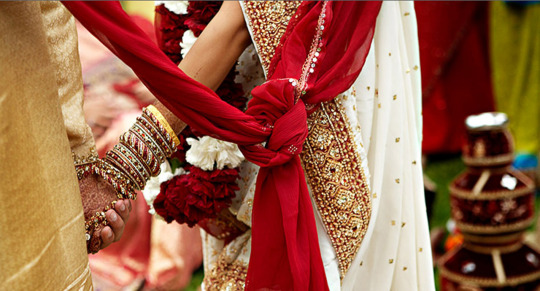
Meghalaya is located in Northeast India. There are many tribes that live in perfect harmony with nature.
The three major tribes in Meghalaya include Khasia, Garo and Jaintia. They were the first to have their own kingdoms prior to the British arrived. The Khasi tribe was among the first groups to settle in Meghalaya.
It was originally from Myanmar and then settled in East of Assam.
Khasi is the most populous tribe of the Meghalaya Wedding.
Let's discover some fascinating facts about the tribe of Meghalaya
A rice and tea bowl, early mornings:
Can you imagine rice and tea? It's the most loved breakfast of the Khasi tribe.
A cup of red tea is served with some sugar and a bowlful of rice.
Two pieces of pork or chicken for a complete meal.
Utilize stones instead of loofas to clean the bathroom:
Loofas are extremely popular and are widely used in bathrooms to bathe.
Locals in Meghalaya don't use loofas, however they do have specific bathing soaps that are found only on the banks of Umngot River Dawki.
They prefer scrubbing their bodies using a stone before bath.
Friendship with Kwai :
Kwai is a symbol of friendship or new relationship.
Kwai is a mixture of Arcai nuts and betel leaf.
It is a pure and divine shape.
English is their language that is communicable.
English is the second language.
It is widely used to communicate with and communicate to all social groups.
This is in contrast to Hindi which is more popular in other areas of the nation.
The Duitara
Khasis have their own musical instrument, two-stringed known as Duitara.
Music is an integral part of their life.
To express emotion and joy music, dancing and singing are enjoyed by all.
Meghalayan Wedding :
Each state has its own distinct culture and specific wedding ceremonies. Meghalaya and the khasi tribe have an unique wedding system.
Let us take you through the interesting rituals and rituals of the khasi.
Women:
The Khasi women are gorgeous, with their pink and red cheeks. Jainkyrshah is a way they show respect for males and elders.
Live with Relationships:

Khasis do not believe in weddings.
It's too uncommon. You've probably been told about an Khasi wedding but it needs to be expensive and large. Engagements are usually the next stage.
This can only be done with the consent of both parents.
Otherwise the couple is happy with their partner in a live-in relationship without the need to tie the knot.
The tribe of the tribe of the live-in relationship accepted it long before Indian law was adopted.
Women Rule:
Women have a greater advantage over men in this country.
Because there are no marriages and when childbirth happens men go on leave and relocate to other places.
The mother takes care of her child alone. Khasis believe that the first child born to a woman is God's gift to God, so they do birth children, however the children have no father identity.
HTML1 Law of Inheritance:
Meghalaya, India's only country where the inheritance of ancestral property is passed to daughters and not to sons is the only one.
The entire property goes to the youngest sister, and she takes care of the siblings as well as all ancestral property.
If there is no daughters in the family, then the mother may transfer the property to the daughter of her sister or she might adopt some different women who are like her daughter in law.
1 note
·
View note
Text
9 Mindblowing Wedding Facts Of ‘Khasi’ Tribe From Meghalaya

Meghalaya is situated in Northeast India
There are many tribes living in harmony with nature.
The three major tribes of Meghalaya include Khasia, Garo and Jaintia.
They were the first tribes to establish their own kingdoms prior to the British arrived.
The Khasi tribe was among the first tribes to settle in Meghalaya.
They came from Myanmar and then settled in East of Assam.
Khasi is the biggest population of the Meghalaya Wedding.
Let's find out some fascinating details about the Khasi tribe from Meghalaya
Tea and rice in a bowl in the early morning hours:
Do you see rice and tea? It's the Khasi tribe's favorite breakfast.
A cup of tea in red is served with sugar and a bowl of rice.
For a complete dinner, they'll need two pieces of pork or chicken.
Utilize stones instead of loofas for cleaning your bathroom.
Loofas are extremely popular and are used in every bathroom to bathe.
Loofas aren't used by the Meghalayans. However they do make use of special soaps for bathing which are only available in the Umngot River Dawki.
The Meghalayans prefer to wash their bodies using stones prior to taking bath.
Friendships with Kwai:
Kwai is a symbol of friendship or a new relationship. Kwai is a mix of Arcai nuts and betel leaf.
It is pure and beautiful form.

English is their language that is communicable.
English is the second first language.
It is widely used to communicate with and interact with all groups of society.
Hindi, which is more prevalent in other regions of India, isn't widely spoken in India.
The Duitara
Khasis are known for their traditional musical instrument that is the two-stringed Duitara.
Music is a vital part of their daily life. To express joy and emotions music, dancing and singing are enjoyed by all.
Meghalayan Wedding :
Every state has its own distinct culture and the wedding rituals that it follows.
The khasi tribe of Meghalaya has its own unique wedding method of wedding. Let's look at the intriguing rituals of the khasis.
Women:
The Khasi women are gorgeous, with their red and pink cheeks.
Jainkyrshah is a method to honor males and elders.
Live in Relatives:
Khasis do not believe in being married.
It's not common.
You've probably been told about the possibility of a Khasi wedding however, it must be expensive and large. Engagements are typically the next stage.
It can only be done with the approval of both parents. Couples can be happy in a live-in relationship and not have to tie the sacred knot.
The tribe was tolerant of live-in relationships even before the Indian law was enacted.
Women Rule
In this country, women enjoy an advantage over males.
Since there aren't any marriages and when childbirth happens men go on leave and relocate to another place.
The mother is responsible for her child on her own. Khasis believe that the very first child given to a woman is an act of God.
They birth however, the child has no father identity.
Law of Inheritance:
Meghalaya is the only Indian country where the inheritance of ancestral property is passed to daughters, not sons, is the sole one.
The whole property is transferred to the younger sister, and she is responsible for the siblings as well as all ancestral property.
Mothers can give the property to her younger sibling, or adopt a woman similar to her daughter-in-laws.
1 note
·
View note
Photo




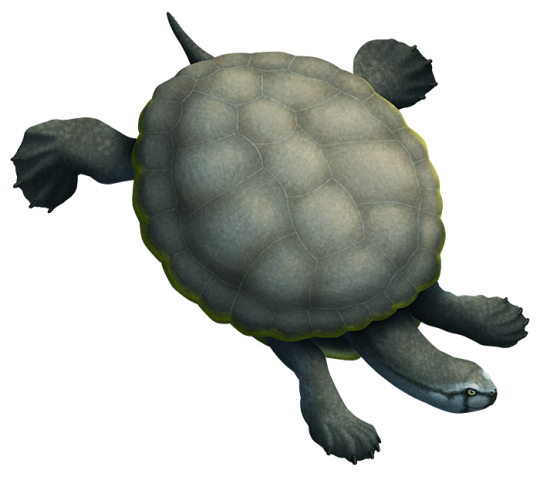


It's another PBS Eons commission roundup day!
The metatherian mammals Pucadelphys and Khasia, and lineart of the sparassodont Paraborhyaena, from "How South America Made the Marsupials"
https://www.youtube.com/watch?v=l5doyrUWFbE
The dyrosaurid crocodyliform Acherontisuchus and the bothremydid turtle Puentemys, from "How a Hot Planet Created the World's Biggest Snake"
https://www.youtube.com/watch?v=T-hDNbM-WLk
The early penguin Waimanu and the giant penguin Anthropornis, from "When Penguins Went From The Sky To The Sea"
https://www.youtube.com/watch?v=HMArjGQwLvY
———
Nix Illustration | Tumblr | Pillowfort | Twitter | Patreon
#science illustration#pbs eons#paleontology#paleoart#palaeoblr#pucadelphys#marsupialiformes#khasia#microbiotheriidae#paraborhyaena#sparassodonta#metatheria#mammal#acherontisuchus#dyrosauridae#tethysuchia#crocodylomorph#puentemys#bothremydidae#pleurodira#turtle#waimanu#anthropornis#palaeeudyptinae#sphenisciformes#penguin#bird#dinosaur#art
409 notes
·
View notes
Quote
In 1790, the company decided to demarcate Bengal in the north. The boundary of the plain land with the hilly region was also demarcated after that. According to the new boundaries, the hilly lands came under the control of the Khasias and the plain lands under the control of the company. Through this the social distance of Khasias with Bengalis was also created. The ethnic diversity of the region was lost as the control of the company was established through creating division in the liberal Bengali-Khasia society. After 1790, all private trade in the Khasia areas was banned. On the other hand, the authority of the plain land in Sylhet, including the power of business registration, was handed over to the collector.
Tamara Yesmin Toma, ‘The Greeks and the limestone trade in Sylhet during the British period‘, Business Standard
#Business Standard#Tamara Yesmin Toma#Bengal#British Raj#Khasias#East India Company#ethnic diversity#private trade#business registration#British collectors
6 notes
·
View notes
Text
Kulzak: The King of Khasia himself will sing the praises of Kulzak Aranak’nai upon his daughter's triumphant rescue!
Esmound: How many of these pirate lords want to kill you?
Kulzak: …Hard to say—
#lmfao#aphmau incorrect quotes#minecraft diaries#Esmound the Protector#Kulzak the Wanderer#the divine warriors#diaries: rewritten#I tell y’all; the shenanigans these two got up to when they first met#Source: The Witcher (Netflix)#Aphverse incorrect quotes
23 notes
·
View notes
Photo

Apparel Radio show #179: Kisk
This new episode [#179] of @apparelmusic Radio show will see master @kisk taking over our imaginary decks to deliver a fall promo mix. A mishmash of rhythmically engaging stuff with a hint of jazzy, deep and club' vibes, blended by his taste. Enjoy!
listen in soundcloud or mixcloud
free download via Hypeddit
Tracklist:
Mangabey - How I Feel [Apparel Music]
Unknown Artist - LC [Schenkelspreizer]
Moff & Tarkin - Young Val Kilmer [Secret Crunch]
Thatmanmonkz - Sweetiez Fresh [Better Listen]
Brame & Hamo - Clarence (Smooth Mix) [Brame & Hamo]
Nebraska - Aglio E Olio (Laurence Guy Remix) [Heist Recordings]
Jam For Real - Maybe You Are feat. Sambatra [Khasia Hills]
SlothBoogie - Acid Fantasy [Sloth Boogie]
Swales - Pushin' Away [Honey Butter Records]
Nachtboutique - Stompin’ House Dub (Dressler’s Dub Version) [Flaneur]
youtube
#apparel music#apparel radio#episode 179#kisk#deep#jazzy#deep house#house#electronica#funk#disco#world music#radio#podcast#mix#Schenkelspreizer#Secret Crunch#Sloth Boogie#Honey Butter#Khasia Hills#Flaneur#Better Listen#Mangabey#How I Feel#Brame & Hamo
4 notes
·
View notes
Text
How To Go To Jaflong Sylhet | A To Z Details Guide 2022
Jaflong (জাফলং) is the best tourist spot in Bangladesh. For thousands of years, according to historians, Jaflong was a secluded homeland. At that time Jaflong was under the Khasia king. According to historians, after the abolition of the zamindari system, the Khasia Jainta king came to an end.
#jaflong #Travel #travellingBangladesh
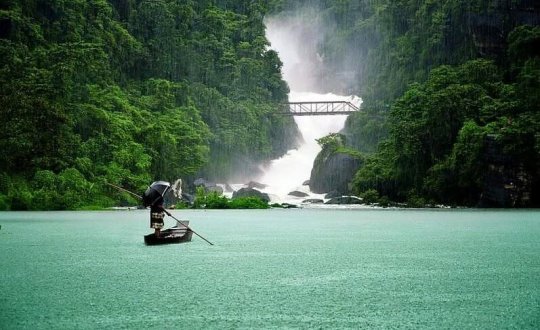
3 notes
·
View notes
Photo


Baguio Pine
Other names: Benguet pine, Khasi pine, Khasia pine, Luzon pine, Szemao pine, three-needled pine
Info and pic from stuartxchange
1 note
·
View note
